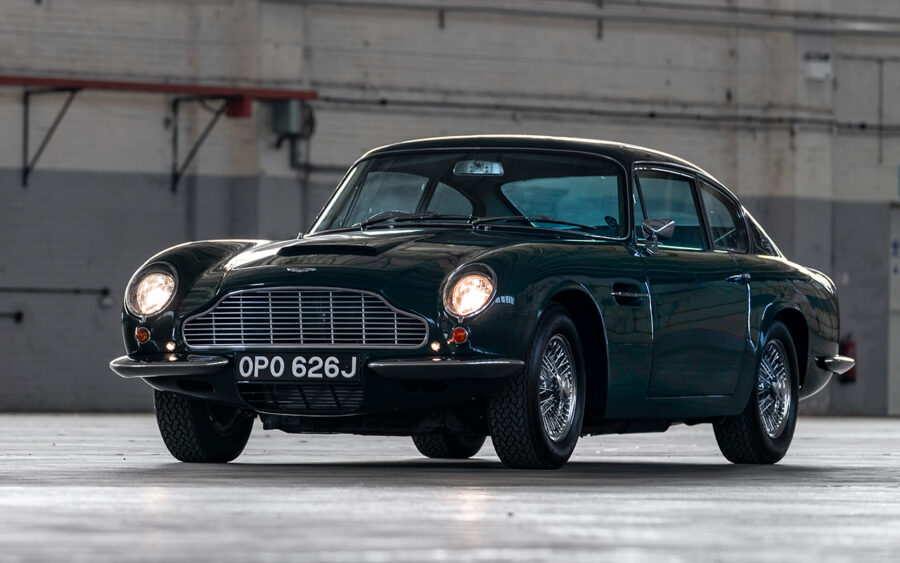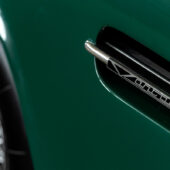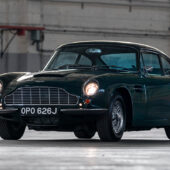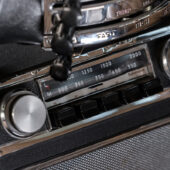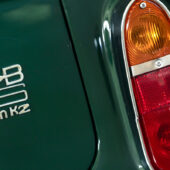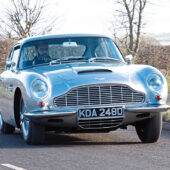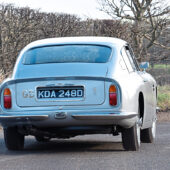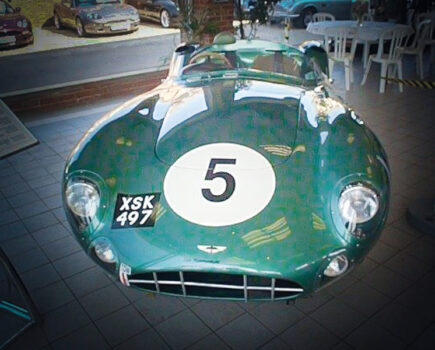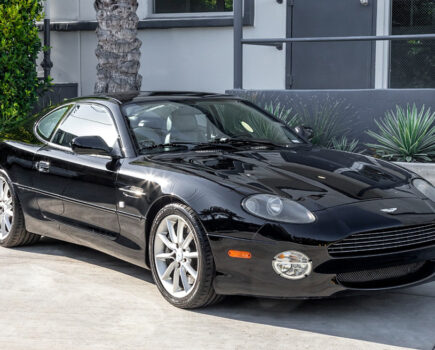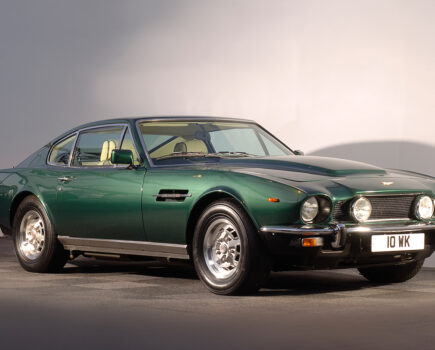The Aston Martin DB6 was a true four-seater at last, with real progress made over the DB5 – but the legacy of the Marek six-cylinder would last far longer than the DB6
Words: Jon Burgess
Unfairly maligned as the DB5’s frumpy younger sister, the Aston Martin DB6 was in fact a most intelligent bridge between the Superleggera cars and the DBS, rushed into production as a six-pot stopgap when it dawned on Aston that its new V8 was unfit for consumers.
Aston was slowly leaving the Italian license behind; far more of the DB6 used folded metal box sections to mount panels, though parts of the body still relied on Touring’s tubes. Superleggera badges still appeared on the DB6’s bonnet edges, but it was clear that the method had reached its shelf life – and was holding production back. Beach’s platform chassis however, was essentially unaltered, save for a 100mm stretch established by the MP 219 prototype.
Barely any heavier than the outgoing DB5, the DB6, for which production began in October 1965, could seat four people in comfort for the first time. Even at its most expansive, the DB4 Series 5 and DB5 were plush 2+2s; with a longer and wider body, there was more room in the DB6’s cabin for a growing family, aided by two inches more roof height and a taller windscreen; the Kammback tail at the rear not only helped aerodynamics, but increased boot space. Power steering and air conditioning could also now be fitted as extras.
Stylistically, the DB6 paid greater deference to Aston Martins past than its detractors realised. While its wide mouthed face, with a bigger grille for an oil cooler recalled the DB4 GT’s cowled headlights, (as well as the subsequent DB4 Series 5 and DB5) and its rear three-quarter windows were a clear call-back to the adored, limited-run DB4 GT Zagato, of which 19 were built. The short-chassied DB5 Volantes had introduced buyers to the split front bumper and TR4 tail-lights used by the DB6; in doing so, the new car appeared to overlap its predecessor (in the case of the DB5 Volante, this was literally true).
Its Kammback rear had been seen – and proven on the track – previously, during DP214 and 215’s tussles at Le Mans. What worked on the Mulsanne worked in Milton Keynes too, and that, too, was near to where Aston Martin relocated; it was now headquartered at Newport Pagnell, leaving its Feltham offices behind and moving to the plant in which its cars were built. Traditional Aston fans were unmoved by the DB6’s styling changes, perceiving it as a distortion of the elegant, Italian-styled DB4 Series I of 1958.

The upheaval also proved too much for long-time stylist, Frank Feeley, who had since departed; Tadek Marek and Harold Beach, however, moved to Buckinghamshire.
Mechanically, the DB6 resembled a late DB5 almost down to the last nut and bolt – the same 4.0-litre, 282 bhp Marek six, and the same ZF five speed were fitted. Armstrong Selectaride dampers, optional on some DB5s, were now part of the standard DB6 specification, in a long-held Aston tradition of standardising optional equipment from outgoing models. Again, an automatic was offered, but few buyers took the plunge. Radius arms and a Watt’s linkage still kept the rear end up; there simply wasn’t the budget to engineer the De Dion rear end that had been on the cards since 1958 at the launch of the DB4 Series I.
A triple-Weber Vantage model was also introduced, alongside two Volante models until 1969, when the short-lived Mark 2 model took over. Strictly speaking, the DB5 ‘short chassied’ Volantes were also DB6s – at least in outward appearance. They still had the DB5’s tail, albeit with DB4 tail lamps, and were only ‘short chassied’ in comparison to the current DB6. They were built between DB5 and DB6 production to use up a stock of DB5 frames. A ’true’ DB6 Volante appeared in 1966, using the full-size DB6 chassis and Kammback tail of the saloon.
One of the two contenders to wear a DB7 badge way before Bloxham got involved with Project NPX, the DB6 Mark 2 was the first of a pair of interim measures to buy Aston more time to sort its 5.3-litre V8, the engine that was supposed to usher in a new age for the firm.
Alas, racing showed up quite a few problems in the new engine – so many, in fact, that the DBS V8 was delayed for two years.
The DBS, hurriedly launched in 1967 with the 4.0-litre Marek six instead of the V8 it was supposed to have, was now generating considerable losses for the firm; not only was the V8 in need of considerable re-engineering but adapting the new car to take and older engine didn’t come for free, either. The DB6 Mark 2 was supposed to help amortise these costs by sharing as many of the DBS’s parts as possible; the theory was that the DB6, already well-established (if divisive) could keep the firm afloat alongside the DBS, buying engineers time to rescue the DBS V8.
Apart from optional Brico fuel injection, the DB6 Mark 2 was indeed a DBS/DBS supplicant; it shared that car’s seats and 15-inch wires, and flared wheel arches were added to modernise its cross-section profile. Its Volante equivalent was launched with the saloon; with the same visual upgrades, it too died with the Mark 2 in 1970, as Aston dedicated all of its resources to pushing the DBS V8 out of the door.

Aston Martin DB6 timeline
1965
DB6 launched as an extensive update of the DB5, complete with a bigger, wider cabin, a Kammback tail and the same 4.0-litre Marek six. Superleggera construction phased out in places, with Touring tubes replaced by folded box sections for some panel supports. Chassis now 100mm longer. ZF five-speed gearbox standard, automatic gearbox a no-cost option. Power steering and air conditioning also available. Stock of DB5 frames run down with Volante drophead; these cars used the DB6’s split front bumper but retained the DB5’s chassis length. Referred to as ‘short chassied’ cars in comparison to the DB6, which was now in production.
1966
DB6 Volante now available, using the DB6’s longer chassis and Kammback rear end.
1967
Aston hurriedly launches the DBS, re-engineered to take the 4.0-litre Marek six, after its 5.3-litre V8, still in development, proves unreliable at Le Mans.
1969
DB6 Mark 1 production phased out in favour of Mark 2; Volante launched simultaneously.
Brico fuel injection available as an option, alongside all other options already available. Flared wheel arches fitted, 15-inch wires and seats now shared with the DBS. 240 of all Mk2 types built. DBS V8 launched.
1970
DB6 discontinued to pool resources into DBS V8.

